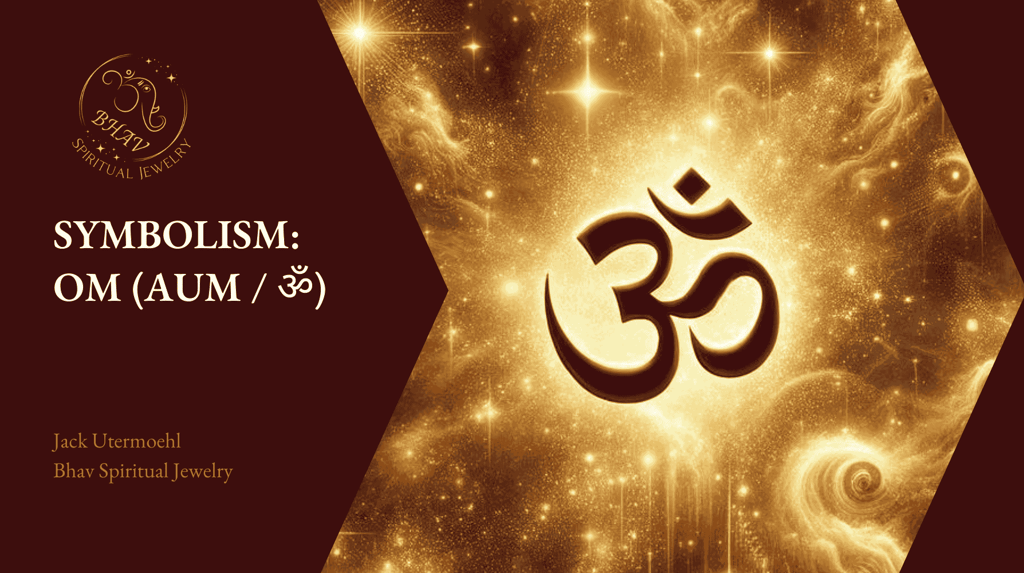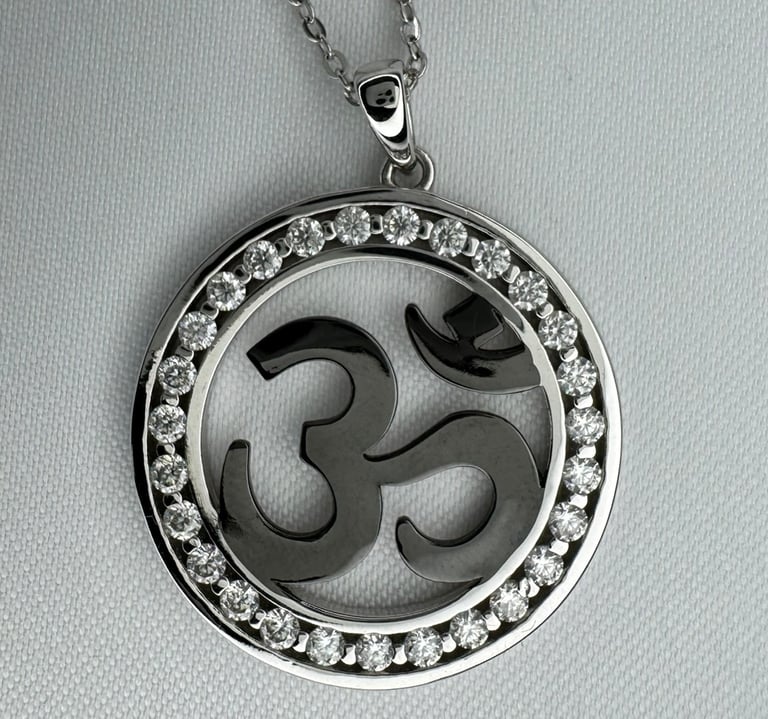Symbolism: Om (Aum / ॐ)
Om represents primordial sound, cosmic vibration, and the fundamental unity of existence.
SYMBOLISM
Jack Utermoehl


Om—also spelled Aum and written in Devanagari as ॐ—is one of the most sacred and universal spiritual symbols in the world. Rooted in the Vedas and echoed across Hinduism, Buddhism, Jainism, and beyond, Om represents primordial sound, cosmic vibration, and the fundamental unity of existence.
It is not just a sound, but a symbol of totality—the unseen force behind all matter, mind, and spirit. Often chanted at the beginning or end of meditation or ritual, Om is considered both the path and the destination.
Origins and Historical Context of OM
Om appears as early as the Mandukya Upanishad (circa 800–500 BCE), where it is described as the essence of the entire universe. The syllable is said to contain all speech and all meaning, and chanting it aligns one’s being with the original creative force (śabda Brahman).
In Hinduism, it is identified with Brahman, the ultimate reality.
In Buddhism, Om is the opening of many sacred mantras (e.g., Om Mani Padme Hum) and represents the unity of body, speech, and mind.
In Jainism, it is linked to spiritual liberation (moksha) and reverence for the five supreme beings.
Visual Description of OM
The written Om symbol (ॐ) combines three curves, a semicircle, and a dot.
The large lower curve represents the waking state (jāgrat)
The middle curve is the dream state (svapna)
The upper curve signifies deep sleep (suṣupti).
The dot symbolizes the silent, transcendental state (turīya), and the semicircle below it represents illusion (māyā), which prevents realization of that state.
This visual encoding is as profound as the sound itself—distilling yogic cosmology into form.
Core Meanings and Interpretations of OM
Primordial Sound: The vibration of Om is believed to be the original sound from which the universe arose.
States of Consciousness: Om encompasses all aspects of awareness—waking, dreaming, deep sleep, and transcendence.
Spiritual Oneness: It represents the unbroken thread between the self (ātman) and the divine (Brahman).
Mantric Power: As a bīja (seed) mantra, Om is said to carry within it the spiritual potency of creation, preservation, and dissolution.
In archetypal terms, Om can be seen as the sound of the Self realizing itself—the inner “yes” to existence.
Related Symbols and Contrasts
Bindu (dot): Seen in the Om symbol and Tantric yantras, representing the source point of consciousness.
Nada: The subtle spiritual sound beyond Om in Nāda Yoga traditions.
Lotus: Often paired with Om in art, symbolizing the unfolding of consciousness from divine sound.
While Om is inward and universal, other mantras may be more specific or deity-focused. Om stands as the mantra of all mantras.


Modern Use and Relevance of OM
Om continues to be:
Chanted in yoga classes, spiritual communities, and temples
Worn as jewelry and tattoos, often as a reminder of inner peace, unity, or sacred intention
Meditated on as a vibration that connects one to the Source
For many today, Om symbolizes a return to center—a connection to something vast, intimate, and eternal. Whether chanted aloud or felt inwardly, its resonance is deeply grounding and spiritually expansive.
Om in Bhav Jewelry
In Bhav’s designs, Om is honored as a symbol of sacred sound and inner truth.
Our Om pieces are offered in sterling silver, often placed near the ears (studs) or the heart (pendants)—locations of resonance, communication, and stillness.
3 OM Symbols Sterling Silver Ring
Open OM Symbol Sterling Silver Ring
OM Symbol Sterling Silver Ring
OM Symbol Sterling Silver Pendant with Garnet
OM Symbol Sterling Silver Pendant with Moissanite
Om Symbol Stud Earrings in Sterling Silver
Modern OM Symbol Sterling Silver Pendant
Ornate OM Sterling Silver Pendant
Large Ornate OM Symbol Sterling Silver Pendant
We create each Om piece to serve as a daily reminder to return to the silence behind all things—to the soundless source that gives birth to sound, form, and being.
References & Further Exploration
Mandukya Upanishad – classic text unpacking the meaning of Om
Bhav Spiritual Jewelry
Sacred Adornments for Every Path
Connect with Bhav
© 2025. All rights reserved.
